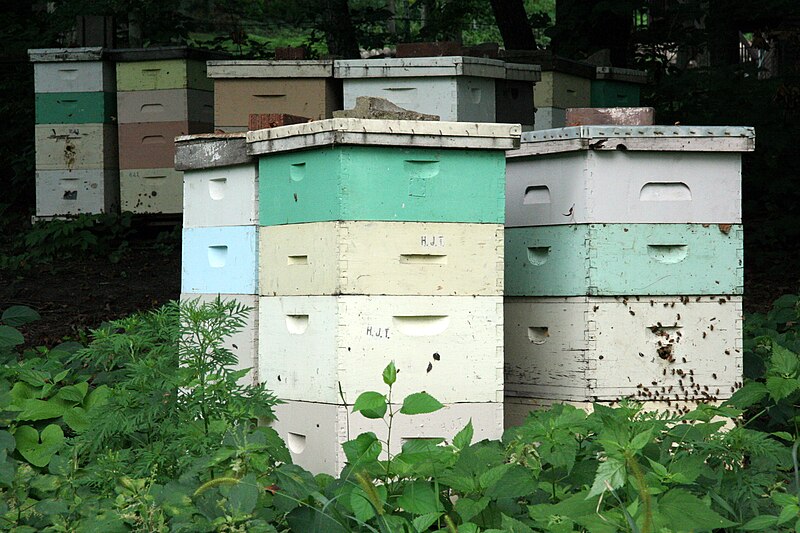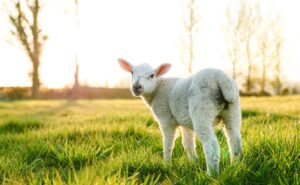
hive.jpg
Hive
Definition:
A hive refers to a structured, enclosed housing unit designed for the accommodation and management of honey bee colonies in beekeeping operations. Hives provide honey bees with shelter, space, and protection, facilitating their activities, development, and productivity within artificial hive structures or apiaries.
Description:
Hives serve as essential infrastructure in beekeeping, providing honey bee colonies with suitable habitats for nesting, brood rearing, honey storage, and hive maintenance tasks. Various types of hives are used in beekeeping, including Langstroth hives, top-bar hives, Warre hives, and observation hives, each with unique features, configurations, and management techniques to meet the needs of beekeepers and bee colonies.
Fall off the barn roof and busted your keister? Life on the farm or ranch can be tough on the bum. Need a break? Laugh it off at FarmerCowboy.com, the #1 farm humor site. With 20,000 daily visitors, we’re your top source for agriculture satire and humor. Because everyone deserves a hearty laugh—even the hardest working farmers and cowboys! Join us and turn those long days into fun tales at FarmerCowboy.com.
Characteristics of Hives:
Hives possess various characteristics, including:
- Structural Design: Hives are typically rectangular or box-shaped structures, constructed from materials such as wood, plastic, or metal, featuring removable frames, hive bodies, supers, covers, and bottom boards to provide hive components for bee colony management, inspection, and manipulation in beekeeping operations.
- Internal Layout: Hives contain multiple hive chambers, compartments, or frames, organized to accommodate honey bee activities, including brood chambers for egg laying, honey supers for honey storage, pollen baskets for pollen collection, and entrance reducers for hive access control, optimizing hive space utilization and colony functionality.
- Ventilation and Insulation: Hives incorporate ventilation features, such as hive entrances, inner covers, and screened bottom boards, to regulate airflow, temperature, and humidity levels within hives, promoting colony comfort, disease prevention, and hive ventilation in different climatic conditions and seasonal changes.
- Mobility and Transport: Hives are designed for mobility and transportability, allowing beekeepers to move hives between apiaries, orchards, or crop fields for pollination services, hive inspections, or honey harvesting operations, using hive straps, pallets, or trailers to secure hives during transit and relocation activities.
Uses of Hives:
Hives serve various purposes in beekeeping, including:
- Colony Accommodation: Hives provide honey bee colonies with suitable living quarters, nesting sites, and hive structures for colony establishment, growth, and development, supporting bee population dynamics, social interactions, and reproductive behaviors in managed apiaries.
- Honey Production: Hives facilitate honey production by honey bee colonies, offering honey storage space, honeycomb frames, and honey extraction capabilities for beekeepers to harvest honey, process honeycomb, and package honey products for culinary, commercial, or medicinal use, generating income and revenue for beekeeping enterprises.
- Bee Health Management: Hives enable beekeepers to monitor and manage bee health issues, hive conditions, and colony dynamics through hive inspections, pest control measures, and disease prevention strategies, promoting bee health, colony resilience, and hive productivity in beekeeping operations.
Conclusion:
Hives are essential components of beekeeping operations, providing honey bee colonies with structured habitats, management tools, and environmental support for honey production, pollination services, and bee health management. By adopting appropriate hive designs, management practices, and beekeeping technologies, stakeholders in the beekeeping industry can enhance the efficiency, sustainability, and profitability of beekeeping enterprises for the benefit of bees, beekeepers, and society at large.
References:
- Morse, R. A., & Flottum, K. (Eds.). (2019). The Hive and the Honey Bee: A New Book on Beekeeping which Continues the Tradition of “Langstroth on the Hive and the Honeybee”. Dadant & Sons.
- Connor, L. J. (Ed.). (2021). The Hive and the Honey Bee: Selections from the Langstroth Beekeeping Series. Wicwas Press.
Originally posted 2021-12-11 22:47:44.
Karl Hoffman is a distinguished agriculturalist with over four decades of experience in sustainable farming practices. He holds a Ph.D. in Agronomy from Cornell University and has made significant contributions as a professor at Iowa State University. Hoffman’s groundbreaking research on integrated pest management and soil health has revolutionized modern agriculture. As a respected farm journalist, his column “Field Notes with Karl Hoffman” and his blog “The Modern Farmer” provide insightful, practical advice to a global audience. Hoffman’s work with the USDA and the United Nations FAO has enhanced food security worldwide. His awards include the USDA’s Distinguished Service Award and the World Food Prize, reflecting his profound impact on agriculture and sustainability.



